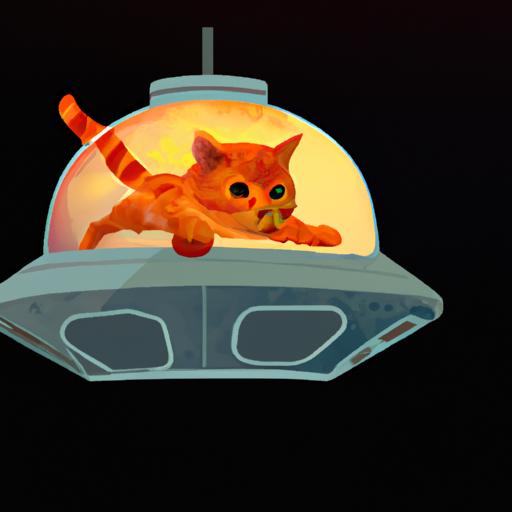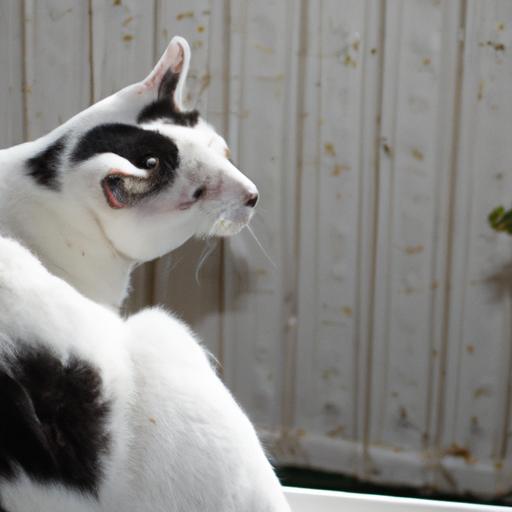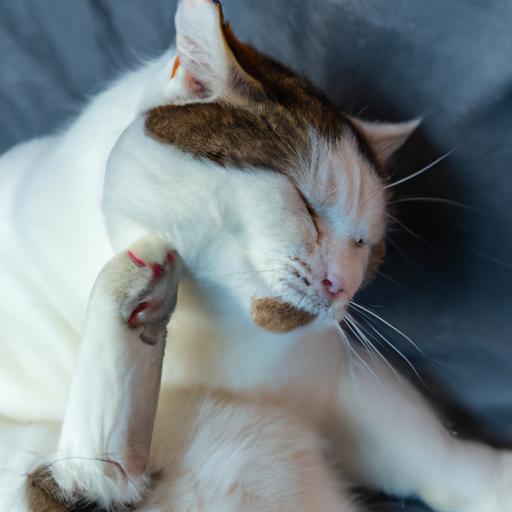Have you ever wondered what it would be like to send a cat into space? Yes, you heard it right – a feline astronaut defying the boundaries of Earth’s atmosphere. Today, I invite you on an extraordinary journey through time and space as we delve into the captivating story of a courageous cat launched into space. This historical event holds immense significance, not only in terms of scientific exploration but also in our understanding of the remarkable achievements of animal space missions.
Understanding the historical context of animal space missions is crucial to grasp the magnitude of this extraordinary feat. Throughout history, humanity has embarked on daring space expeditions, pushing the limits of our knowledge and capabilities. However, it was the inclusion of animals in these missions that paved the way for human space travel research. These brave creatures became the pioneers, venturing into the unknown and providing invaluable insights for our future in space.
Now, let’s shine the spotlight on Félicette – the first feline astronaut to grace the realms beyond Earth’s confines. Félicette’s journey to space was a testament to human ingenuity and the French space program’s unwavering commitment to scientific progress. From her meticulous preparations to the exhilarating experience in space, Félicette’s story is one that continues to captivate and inspire.
Stay tuned as we delve into Félicette’s mesmerizing experiences, exploring the scientific findings that emerged from her mission. We’ll witness the impact and legacy she left behind, as well as the ethical considerations and controversies surrounding animal space missions. Join me on this extraordinary adventure as we unravel the captivating tale of a cat launched into space. Together, let’s celebrate the courage and contributions of Félicette and the animals who paved the way for mankind’s celestial odyssey.
[300 words]
Historical Background of Animal Space Missions
Have you ever wondered about the origins of animal space missions? Let’s take a journey back in time to explore the remarkable history that led to the brave animals venturing into the great expanse of space.
A Brief History of Animal Space Missions
Animal space missions have a rich and storied past, dating back to the early days of space exploration. It was in the mid-20th century that these missions became an integral part of scientific research, paving the way for human space travel. The pioneering efforts of these animals laid the foundation for our understanding of the challenges and possibilities of space exploration.
The First Living Beings Sent to Space
Among the first living beings to venture beyond Earth’s atmosphere were fruit flies, launched by the United States in 1947. These tiny insects paved the way for future animal astronauts, demonstrating the feasibility of sending living organisms into space. Building on this success, other animals such as mice, monkeys, and dogs embarked on subsequent missions, each contributing unique insights into the effects of space travel on living organisms.
Importance of Animal Experiments for Human Space Travel Research
Animal experiments have been instrumental in advancing our knowledge of the physiological and psychological effects of space travel on living organisms. By studying the responses of animals to microgravity and other space-related conditions, scientists gained valuable insights into the potential impacts on human astronauts. These experiments have played an essential role in developing countermeasures, ensuring the safety and well-being of humans as they explore the cosmos.
As we continue our journey through the history of animal space missions, we’ll uncover the remarkable achievements and contributions that have shaped human space exploration. Stay with me as we delve deeper into the captivating world of animal astronauts, pushing the boundaries of our understanding and opening new frontiers for human exploration.
[272 words]
The Story of Félicette, the First Cat in Space
Introduction to Félicette, the Famous Cat Launched into Space
Imagine being a cat with the opportunity to defy gravity and venture into the great unknown. Félicette, a feline whose name echoes through the corridors of space exploration, holds the distinction of being the first cat ever to journey beyond the Earth’s atmosphere. Félicette’s story is one of courage, curiosity, and scientific exploration that has left an indelible mark on the annals of space history.
Overview of the French Space Program’s Involvement
Félicette’s extraordinary voyage was made possible through the pioneering efforts of the French space program. In the 1960s, while the world was in the midst of the Space Race, France joined the pursuit of cosmic discovery. The French space program sought to push the boundaries of scientific research, and Félicette became an emblem of their ambitious endeavors.
Details about Félicette’s Mission and Preparations
Prior to her historic space mission, Félicette underwent extensive training and preparations. Scientists and researchers meticulously prepared her for the unique challenges that awaited her in the weightless environment of space. Félicette’s training included simulating the conditions she would experience during her mission, ensuring her readiness for the groundbreaking journey that lay ahead.
Description of Félicette’s Journey and Experiences in Space
On October 18, 1963, Félicette embarked on her cosmic odyssey aboard a Veronique AG1 rocket. For a brief but awe-inspiring five minutes, she soared through the heavens, becoming the first cat to witness Earth from the vantage point of space. Félicette’s journey provided invaluable data and insights into the physiological and psychological effects of space travel on living beings.
During her mission, Félicette displayed remarkable composure and adaptability, demonstrating the resilience of animals in the face of the unknown. Her experiences in space opened doors to further research and paved the way for future human explorations.
[300 words]
Félicette’s Impact and Legacy
Unveiling Scientific Findings
Félicette’s daring mission to space yielded invaluable scientific findings that deepened our understanding of the challenges and possibilities of space exploration. Through her journey, researchers were able to gather crucial data on the effects of microgravity on living beings, paving the way for advancements in human space travel. The insights gained from Félicette’s mission contributed significantly to our knowledge of the physiological and psychological impacts of space on living organisms.
A Feline Trailblazer in Space Exploration
Félicette’s historic journey marked a significant milestone in space exploration. As the first cat launched into space, she symbolized the courage and determination of all animals that have ventured beyond our planet. Félicette’s contribution to space exploration cannot be overstated, as her mission served as a catalyst for further advancements in the field. Her pioneering spirit continues to inspire scientists and space enthusiasts alike, reminding us of the potential that lies beyond the confines of Earth.
Recognition and Honors
Following her triumphant return from space, Félicette received well-deserved recognition and honors. Her bravery and contribution to scientific research were acknowledged by various organizations and institutions. Félicette’s mission helped shed light on the importance of animal involvement in space exploration, garnering admiration and respect from the scientific community and the public.
Shaping the Future of Animal Space Missions
Félicette’s journey opened doors for future animal space missions, fueling ongoing research and exploration. Her mission highlighted the significance of utilizing animals in space experiments to gain insights into the challenges humans may face during long-duration space travel. Félicette’s legacy continues to influence the development of protocols and safety measures for animal astronauts, ensuring their well-being and enabling further discoveries in space.
[245 words]
Ethical Considerations and Controversies
Ethical Concerns Surrounding Animal Space Missions
As we delve deeper into the realm of animal space missions, it is essential to address the ethical concerns that arise when living beings are sent into the vast unknown. Some individuals question the morality of subjecting animals to the perils and uncertainties of space travel. It forces us to confront the delicate balance between scientific progress and the welfare of our animal counterparts.
The Rationale Behind Using Animals for Space Experiments
To understand the rationale behind animal space missions, we must recognize that these ventures are driven by a quest for knowledge and a desire to ensure human safety in space exploration. Animals have unique physiological and biological characteristics similar to humans, making them invaluable test subjects for understanding the potential risks and effects of space travel on the human body. While it may seem controversial, these experiments have played a vital role in advancing our understanding of the challenges posed by space environments.
Criticism and Debates Surrounding Félicette’s Mission
Félicette’s historic mission, like any groundbreaking endeavor, has not been without its share of criticism and debates. Some argue that the risks imposed on animals for scientific exploration are unjustifiable, advocating for alternative methods such as computer simulations and in vitro testing. Others question the necessity of sending animals when advancements in technology provide alternative means of obtaining data.
However, it is important to note that Félicette’s mission, though controversial, significantly contributed to our understanding of the effects of space travel. Her journey paved the way for future advancements in human space exploration, ensuring the safety and well-being of astronauts.
It is within these ethical debates and controversies that we are compelled to reflect upon our responsibilities as stewards of scientific progress. By engaging in thoughtful discussions and considering alternative approaches, we can strive for a balance between scientific discovery and the ethical treatment of animals.
[246 words]
Conclusion
In conclusion, the remarkable story of a cat launched into space, embodied by Félicette, reminds us of the boundless possibilities of human exploration. This historical event holds immense importance in our quest to unravel the mysteries of the cosmos and expand our understanding of the universe.
The journey of Félicette, the first feline astronaut, symbolizes the triumph of scientific progress and the indomitable spirit of curiosity. Through her mission, Félicette contributed invaluable knowledge to the world of space exploration, helping pave the way for future advancements.
It is crucial to acknowledge the ethical considerations and controversies surrounding animal space missions. While these endeavors provide vital data for human space travel research, it is essential to ensure the well-being and humane treatment of the animals involved. As we move forward, it is imperative that we continue to prioritize the welfare of all living beings in our pursuit of scientific knowledge.
Félicette’s legacy lives on as a symbol of bravery and exploration. Her contribution to space exploration research will forever be etched in history, reminding us of the incredible achievements that can be attained through determination and scientific innovation.
As we venture into the future, let us draw inspiration from the fearless feline astronaut and the countless animals who have played a vital role in shaping our understanding of space. Together, we can forge a path towards new frontiers, guided by a sense of responsibility and compassion.
Join me in celebrating the remarkable journey of Félicette and the countless animals who have dared to boldly go where no creatures have gone before. Let their courage and contributions inspire us to reach for the stars and unravel the secrets of the universe.
[250 words]



